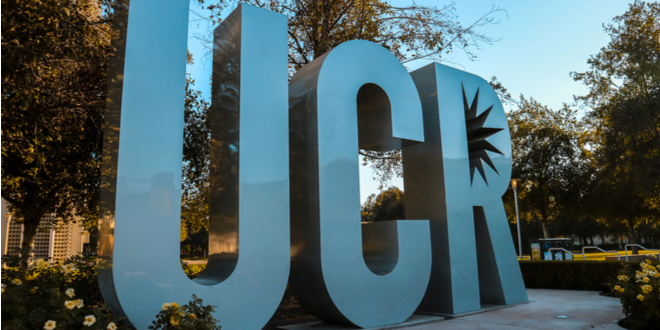With an emphasis on manufacturing zero emission vehicles, something it’s already doing relatively well. Best of all, a gradual shift to a green economy shouldn’t hurt job growth, according to a recent report.
Despite having a smaller green economy than most states, California is on track to catch up, according to a recent report.
By the end of this decade California will have developed a firm hold on environmentally friendly jobs, and by 2030 it should be outperforming the country in that category, according to the study by the UC Riverside School of Business Center for Economic Forecasting and Development.
That means California, generally considered one the most environmentally conscious states, will stand a better chance of attracting investment, innovation, and creating even more jobs. It also means that, unlike some states, California should not have to choose between growing its economy and having a cleaner environment.
“The transition to a greener, cleaner economy is not at odds with job creation,” said Patrick Adler, research manager at the forecasting center and one of the report’s co-authors.
The research center spent three months working on the report with Next 10, a San Francisco nonprofit that studies economic, environmental and quality-of-life issues that are likely to arise in California during the next decade.
“We’re trying to start a discussion about green [businesses] that can be persuaded to come to California, because they’re such a big part of the state’s future,” Adler said. “But attracting jobs is a lot easier said than done. Just about every politician who runs for office says they’re going to create jobs, but their record on that is mixed to poor.”
The Inland Empire is likely to benefit from an increase in green jobs, according to Adler.
“It’s in a good position, with the logistics industry and all of the available land it has,” Adler said. “It’s in a good position to get a lot of ‘blue-green’ jobs, which are blue-collar jobs that can be made green.”
Right now, California faces what the 30-page analysis called two generational challenges: keeping its economy strong in the aftermath of Covid-19 and, at the same time, reducing carbon emissions.
To meet its own reduction targets, the state by 2030 must cut carbon emissions by 40 percent from their 1990 level. Creating green jobs – meaning jobs that contribute to energy efficiency – will mean eliminating jobs in oil, gas and coal, three industries that have long been major player in California’s economy.
However, a study of the state’s labor force shows that a greener economy could be a net positive for the state by creating jobs and improving wages over time.
One green sector that figures to help California’s economy in the coming years is the production of zero emission vehicles, an area where the state has a leg up. The 2021-2022 state budget committed nearly $4 billion to accelerating the production of zero emission vehicle through 2024.
With that goal in mind, the state legislature included – and Gov. Gavin Newsom approved – $6.1 billion in the 2022-2023 budget to increase that production even more. That money is expected to be spent during the next five years.
Tesla, the designer and maker of hight-end electric vehicles, in December moved its Northern California headquarters to Austin, Texas, and opened a 6,500-worker “gigafactory” in Nevada, where it already operated a similar facility, not California.
But Tesla’s action won’t slow the move toward the making of electric vehicles, which is gathering steam in California and globally.
Zero emission vehicle production generates $244 billion worldwide, with 5.6 million vehicles sold in 2021, a little more than seven percent of all new vehicles sales. More than 200,000 people work in that industry, and that number is growing by 15 percent annually.
At that rate, zero emission vehicle production will add more than 63,000 workers by 2030, according to the report.
In California, during the the next eight years, motor vehicle jobs in California – including zero emission jobs – are expected to increase by 18,500 workers, a 12.6 percent increase compared with 2021.
Manufacturing of zero emission vehicles is much like aviation in the 1930s and 1940s, Adler said.
“California became a great producer of airplanes back when aviation was first getting started,” said Adler, who has a doctorate in urban planning from UCLA. “That was a new industry then, and zero emissions production is the same thing today. There are a lot of similarities between the two.”
California has a reputation for having too many regulations and for being a difficult place to do business, but that won’t be an obstacle to creating a green economy, according to Adler.
“Regulations can be an impediment, but California has passed legislation designed to create a green economy, especially green emission vehicles,” Adler said. “In this case the regulations will be helpful.”
Developing green jobs is the correct longterm move, but it will be a tough sell so long as more affordable forms of energy are available, said Jay Prag, professor of economics at the Drucker School of Management at Claremont Graduate University.
Even the environmental benefits could be limited, he added.
“Everybody, including places like China and India, have to go green if it’s really going to work,” Prag said. “A green economy in one place doesn’t help that much.”
Today, nearly 373,000 people work in California’s green economy. That’s a solid number, but per capita California still lags behind several smaller states, and it needs to add nearly 59,000 jobs by the end of decade – something it’s on track to do – to catch up, the report states.
 IE Business Daily Business news for the Inland Empire.
IE Business Daily Business news for the Inland Empire.


